marine tourism best management practices a practical guide
marine tourism best management practices a practical guide
marine tourism best management practices a practical guide
Create successful ePaper yourself
Turn your PDF publications into a flip-book with our unique Google optimized e-Paper software.
Marine Tourism Best Management PracticesPeople For Puget Sound • pugetsound.orgCleaning:• Rinse your boat off after each use with fresh water• Try to use non-commercial products where possible. Avoid products thatcontain phosphates, chlorinated compounds, petroleum distillates, phenolsand formaldehyde. Note that biodegradable soaps are not necessarily nontoxicand there is a good deal of misleading advertising:Bleach: Borax or hydrogen peroxideDetergent: Your own elbow greaseScouring Powder: Baking sodaWindow cleaner: One cup vinegar with 1 quart warm water- squeegee or usenewspaperCopper cleaner: Lemon or lime juice with salt and waterFiberglass stain remover: Baking soda pasteAluminum: Cream of tartar and water• Scrape and sand on-shore: Cover the area between the boat and the dockwith visquine (plastic sheet) or a tarp to catch debris. Reverse the boat inthe slip to work on the other side. Reuse visquine or tarp after cleaning andallowing it to dry.• Use sanding equipment with a dust containment bag. Sweep or vacuum allresidual sanding dust and put it in the trash.• Plug scuppers to contain dust and debris.Painting: Marine paints have a long history of adverse environmental effects.Biological “fouling” is caused by organisms (called phyla) such as tunicates, tubeworms, barnacles, algaes and slimes. They increase drag, resulting in added fuelconsumption and can cause major structural damage to a vessel’s hull. Earlieranti-fouling paints used tributylin, or TBT, which is now prohibited under federaland international treaties. TBT led to structural deformities in oysters and othermollusks at very low levels (Ship Shape. Document 99-16. Washington StateDepartment of Ecology. www.ecy.wa.gov/programs/wq. To order a copy call (360)407-7472).Most anti-fouling paints are either conventional or soluble.(1) Conventionals use diffusion as the mechanism to release the copper biocide.These paints can have copper concentrations as high as 75 % but lose theireffectiveness when the boat is pulled out of the water for prolonged periods34



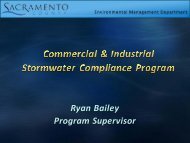
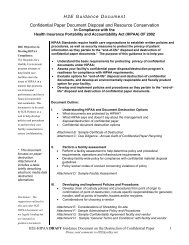
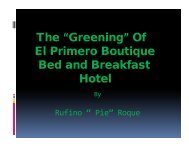
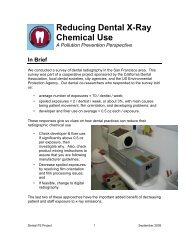
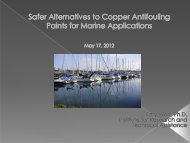
![Dental Amalgam Use [pdf]](https://img.yumpu.com/33828185/1/190x245/dental-amalgam-use-pdf.jpg?quality=85)




